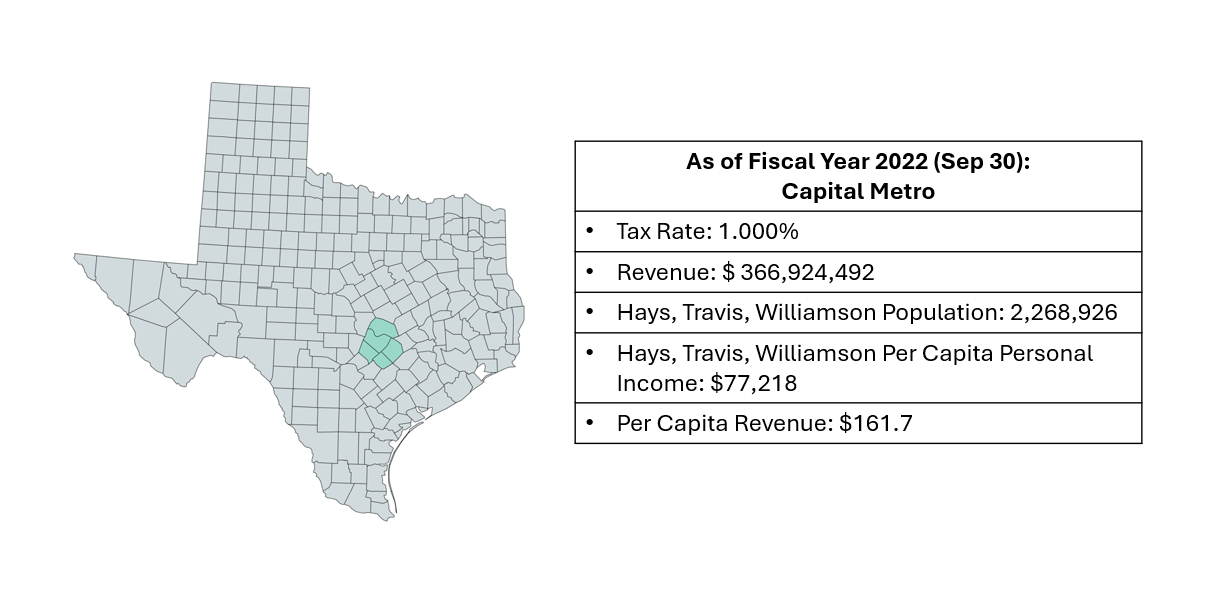Austin, Texas
The greater Austin region, also known as the Austin–Round Rock–San Marcos metropolitan statistical area (MSA) is located in central Texas, and includes the following five counties: Bastrop, Caldwell, Hays, Travis, and Williamson.
Three of these counties, Hays, Travis, and Williamson, belong to the Capital Area Metropolitan Planning Organization (CAMPO) and Central Texas Regional Mobility Authority, an independent government agency created in 2002 to improve the transportation system in Williamson and Travis counties.
Capital Metro was established by a voter referendum in 1985 and is funded in part by a 1.0% sales tax levied by members of its service area. Not all jurisdictions in the three-county area collect the sales tax. Instead, they contract for services.
The relevant sales tax base includes retail sales, leases, and rentals of most goods, as well as taxable services, like amusements, cable television, data processing debt collection, insurance, internet, personal services, telecommunications, and others.
Texas State Law allows local jurisdictions to charge a combined sales tax up to 2%, of which the City of Austin is part. The City of Austin receives half of that and has done so since 1968. However, that money goes into the City’s General Fund. Austin Transportation is a self-funded enterprise department.
As shown in the Texas Comptroller’s Sales Tax Rate History, the current 1% transit tax rate has been in place since October 1995. Capital Metro handles the collection and disbursement of that revenue, which is collected from its partner cities like Austin, Leander, and Manor.
The most recent Annual Financial Report shows revenues from FY 2022, which ended Sept. 30, 2022, on page iii.
Source:













